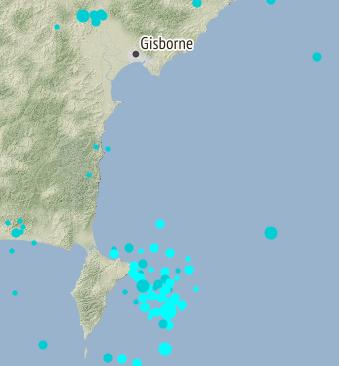A swarm of earthquakes has been triggered off the North Island's east coast by a large seismic event similar to what preceded the 2011 Japanese quake and tsunami.
GNS Science has confirmed one of the largest "slow-slips" ever observed in New Zealand is currently underway off the coast of Gisborne in the Hikurangi subduction zone.
- Massive earthquake, tsunami in New Zealand inevitable in our lifetime - experts
- Whakatane rattled by 4.9 magnitude quake
- 'Heightened earthquake activity' near New Zealand sparks warning from GeoNet
A slow-slip is essentially a slow, silent earthquake undetectable by humans and the seismograph network because it is the movement of faults over weeks or months, according to GNS Science geophysicist Laura Wallace.
That compares to typical quakes which happen over minutes or seconds.
This slow-slip began last week and so far scientists have recorded "up to 3cm of eastward displacement," said Wallace.
"This is caused by up to 10-15cm of movement on the Hikurangi plate boundary offshore of Gisborne."
While these events are fairly common, happening every one or two years, this slow-slip is on track to be "as large at the previous slow-slip" recorded off Gisborne in 2010.
They tend to last for a few weeks, meaning this slip is still early in its cycle and small earthquakes triggered off the coast of the Mahia Peninsula by the event could continue for a while to come.
Since Monday, 85 quakes have been recorded in the area.

There have also recently been multiple small earthquakes recorded around the North Island, including in the north and off the coast of Whakatane. But GNS Science say it is hard to directly tie those to this slow-slip.
International seismologists have found the 2011 Japanese earthquake was preceded by a slow-slip earthquake that lasted a month, but the predictive value of the events remain unclear.
Scientists are studying the slow-slips off Gisborne through instruments on the seafloor off Poverty Bay to understand more about the movements and subduction zone processes.
This could help with earthquake forecasting in the future.
On Wednesday, Kiwis were urged to prepare for a large magnitude 8.9 earthquake off the coast of Gisborne which experts believe is inevitable and could happen within our lifetime.
Newshub.


